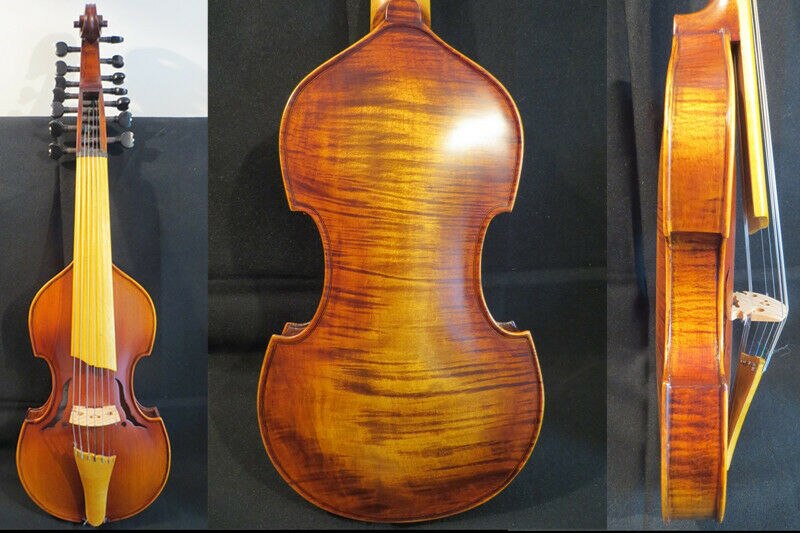SALE 5% OFF
Hand made SONG Brand maestro 7×7 strings 14″ Viola d’Amore 4/4 violin #13171
One-piece of backYou will be inebriety in the perfect soundLoud and resonant sound, rich toneOld european spruce top and flamed maple backBeautiful coloru Rare SONG Excellent unique 7×7 strings 14″ viola d’Amore, perfect sound, Loud and resonant sound ,rich tone.fine workmanship and up to the hammer paint color,very pretty contour. It is the wisest choice for playing and collecting.u It was made by our master maker Mr Song and two of his right-hand students . They have been to Italy to learn for further education of the technique for making violins u European Spruce Top with the even grainu Beautiful Flamed maple Back , Neck and Ribs, Natural dried 25 yearsu Excellent Condition- no cracks, no repairs, no damage.u Ebony pegs, chinrest and fingerboardu Good Bridge u Free with high quality soft bagu Free Good Bow and rosin Sizes: The body length:14″ The string length: 13″ The upper width between adjacent string is about 5.3mm,the bridge width between adjacent string is about 9mmThe tuning from lowest to top is: A – d – a – d’ – f#’ – a’ – d”Notice: The strings of this instrument aren’t exact, Since we haven’t find the right strings for it, Please put the right strings on it by yourself. please understand.About the Viola d’Amore: The majority of violas d’amore have fourteen strings — seven playing strings and seven additional resonating or sympathetic strings that go through the bridge and between the fingerboard and neck of the instrument, held by individual pegs in the elongated pegbox. The sympathetic strings are most often tuned to the same pitches as the playing strings. Instruments exist with different combinations of playing strings (four, five, six, and seven) and sympathetic strings (from four up to fourteen). In Germany, violas d’amore without sympathetic strings existed for a short time during the early 18th century. During the Baroque period, it was common practice to tune the viola d’amore in the key of the individual piece. Joseph Maier listed 16 different tunings for viola d’amore in his 1732 treatise Museum musicum.Vivaldi used the tunings of D major, d minor, A major, a minor and F major in his eight concerti for viola d’amore. By the end of the 18th century, the tuning settled into one tonality, which is the one that is used today and most often for classical, romantic and contemporary pieces. That tuning, from the lowest seventh string up to the top first string, is:A – d – a – d’ – f#’ – a’ – d”The bulk of viola d’amore music during the 18th century was written in scordatura notation, a system by which a violinist could more easily play on a viola d’amore with different tunings other than the standard tuning of a stringed instrument tuned in fifths. The top four strings of the viola d’amore could be tuned to different possible pitches but the written notation would use the open g, d, a, and e strings of the violin for those pitches, so that if the top string were tuned to d”, the written note was an e” and it would sound d”. For the lower 3 strings, it was common to have those written in the bass clef, but sounding an octave higher. This system made it feasible for one not used to scordatura tuning to play more easily on the viola d’amore. On the other hand, some composers, such as J.S. Bach and Christoph Graupner did not use scordatura notation at all and so the written notes were those actually that were sounded.













